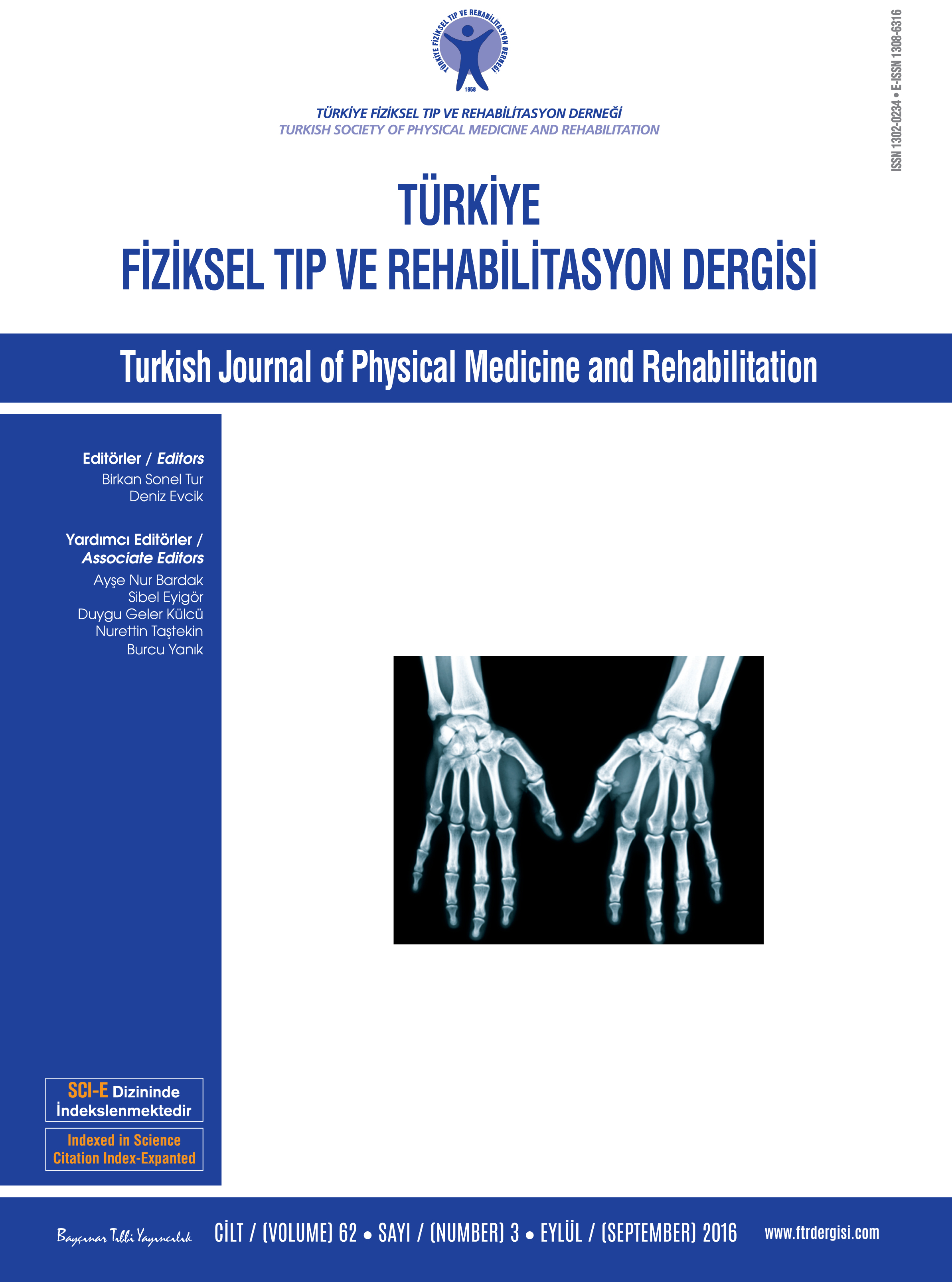Association of vitamin D deficiency with fatigue, daytime sleepiness, and physical activity level
2 Haydarpaşa Numune Eğitim ve Araştırma Hastanesi, Fizik Tedavi ve Rehabilitasyon Kliniği, İstanbul, Türkiye DOI : 10.5606/tftrd.2016.12258 Objectives: This study aims to investigate the effect of daytime sleepiness and fatigue on physical activity in patients with varying serum 25- hydroxylvitamin D [25(OH)D] levels.
Patients and methods: Between January 1, 2015 and February 28, 2015, a total of 90 patients (5 males, 85 females; mean age 48.5±9.5 years; range 18 to 65 years) were included in the study and divided into three groups with 30 patients in each based on serum 25(OH)D levels including 0 to 10 ng/mL (group 1), 10 to 20 ng/mL (group 2) and 20 to 30 ng/mL (group 3). The Multidimensional Assessment of Fatigue (MAF) Scale for the assessment of fatigue level, the Epworth sleepiness scale (ESS) for the sleepiness, and the International Physical Activity Questionnaire (IPAQ) for the physical activity levels were used.
Results: Serum 25(OH)D levels were negatively correlated with the MAF and ESS scores, but were positively correlated with the IPAQ scores (p=0.000 for all). Group 2 had a median IPAQ score of 363 (range, 66 to 1386), which was higher than the group 1 (231; range, 33 to 693) (p=0.014). Group 3 had a median IPAQ score of 753 (range, 347 to 2520), which was significantly higher than the other two groups (p=0.000 for all). Physical activity levels were found to be significantly negatively associated with fatigue and ESS scores (p=0.000 for all).
Conclusion: Based on our results, vitamin D deficiency is associated with fatigue and daytime sleepiness. This, in turn, leads to a reduced level of physical activity among patients.
Keywords : Fatigue; physical activity; sleepiness; vitamin D deficiency

















